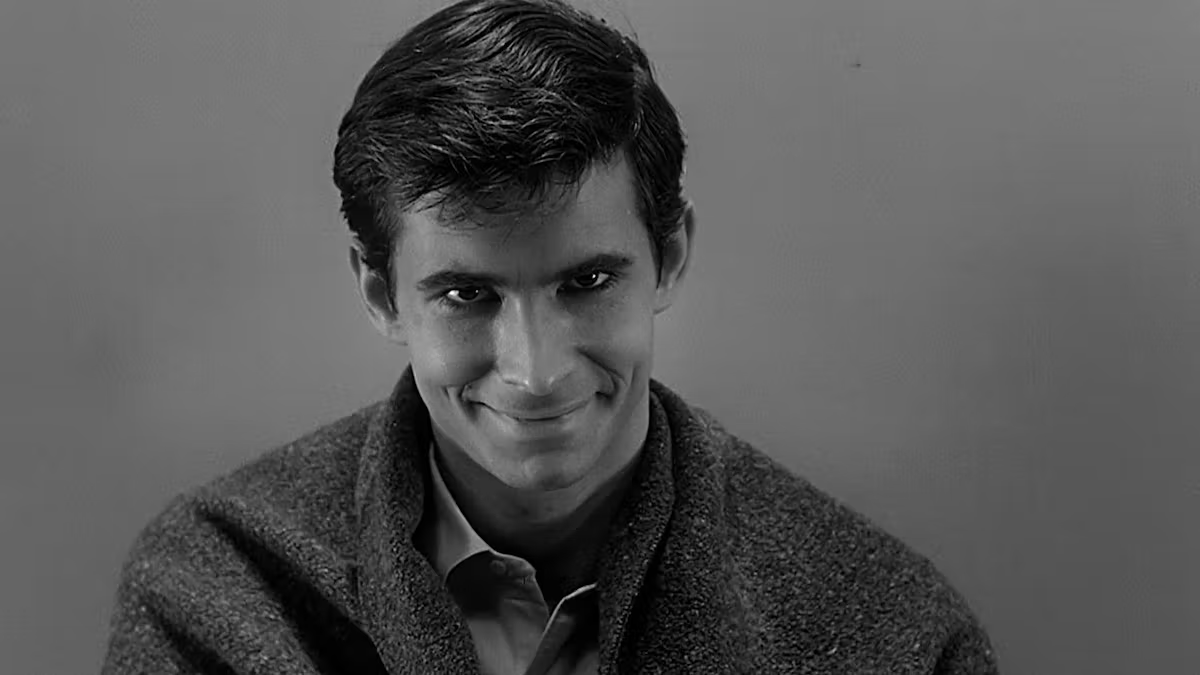on
Psycho: An investigation of evil and malice

Psycho, Alfred Hithcock, 1960
“We all go a little mad sometimes”, notes Norman Bates (Anthony Perkins), the lonely owner of Bates Motel, a secluded motel off the highway and the unfateful place where Marion Crane (Janet Leigh) decides to spend the night while on the run after stealing $40,000 from her boss. I think this dialogue summarizes Psycho, Alfred Hitchcock’s seminal 1960 work investigating the human tendency to bend towards evil and malice. Marion found herself commiting theft and betraying her boss of 10 years just for some money. Bates is a most interesting character for analysis. A lonely, young man who is something of a goof (or atleast that was our first impression of him). With strong the-boy-next-door vibes, he casually puts his hands in his jeans, shows genuine concern for his customers, and radiates that infectious smile all around. And then of course, Bates’ mother, the central enigma of the film. I’ll argue we all have a Mrs. Bate equivalent in ourselves (if you know what I mean) and it is this connection that gives such massive appeal to Psycho almost 60 years after its release. Hitchcock brings together our most primal fears and serves them to us in a shocking and mesmerizing platter.

Janet Leigh’s Marion Crane in Psycho
CINEMATOGRAPHY
The shower murder scene is one of the most iconic shots in cinematic history and for a reason, indeed. It showed posterity how actions can be shot. By making the audience a part of the scene (an idea Hitchcock was a big fan of). The jump cuts, the scream, the grimacing face of Marion, the glint of the knife, and the blood flowing down the drain. It’s just so meticulously done. Psycho has its share of glass-ceiling breaking moments when Hitchcock kills off the heroine of the film one-third way through the film. A shocking decision that only intrigues us more. The second murder of the private detective Argobast, is cool in itself, a bird-eye shot of the event captured in its entirety, spontaneity and all. The usage of reverse projection to give us the perception of Argobast falling down the stairs. Usage of avant-garde cinematic techniques is something Hitchcock loved to experiment with (The CGI of Vertigo, unmistakenly, comes to mind).

Norman Bates, the lonely Bates motel owner
ART AND CINEMA
A passing mention of the Bates house, an architecture inspired by Edward Hopper’s 1925 House by the Railroad, a chilling architectural equivalent representation of the occupant of the house. Hitchcock spent considerable efforts to craft a greatly detailed and almost impeccable mise-en-scene. It all adds up to the final effect that Psycho has on our psyche that is never left the same.

Edward Hopper’s ‘House by the Railroad’-inspired Bates residence.
HITCHCOCK AND VOYEURISM
Another motif that deserves mention is Hitchcock’s fetish for voyeurism. Be it the camera scanning the skyline of Phoenix to narrow down into a hotel room where Marion and Loomis are having an illicit love affair. Or, Bates peeping into Cabin 1 through a hole in the wall (suggesting peeping into his customer’s lives is one of his pasttimes. Taxidermy being the “obvious” other) to find a half-naked Marion stripping, a beautiful creature I must give in to that and what arouses Bates desire and sets the plot in effective motion.
AN AVOIDABLE OVERKILL
One tiny rant: I think the explanation at the climax by the psychatrist was an overkill and unnecessary. With a movie that relies so heavily on suspense and cliff-hangers, it would have only made more sense if Hitchcock had decided to let the audience connect the dots for themselves by just giving them enough morsel for thought. But it might have been Hitchcock paranoid about masses not being able to understand his film, a constant paranoid for artists, I suppose. Premise felt similar to Agatha Christie’s Mousetrap. And, the initial premise of Marion finally realizing her mistake of stealing money bore too great a resemblance to Selma Lagerlorf’s short story Rattrap, a text I remember from my school curriculum.
“We all go a little mad sometimes”. Yes, and Psycho confronts and celebrates that upfront and close.

We all go a little mad sometimes.